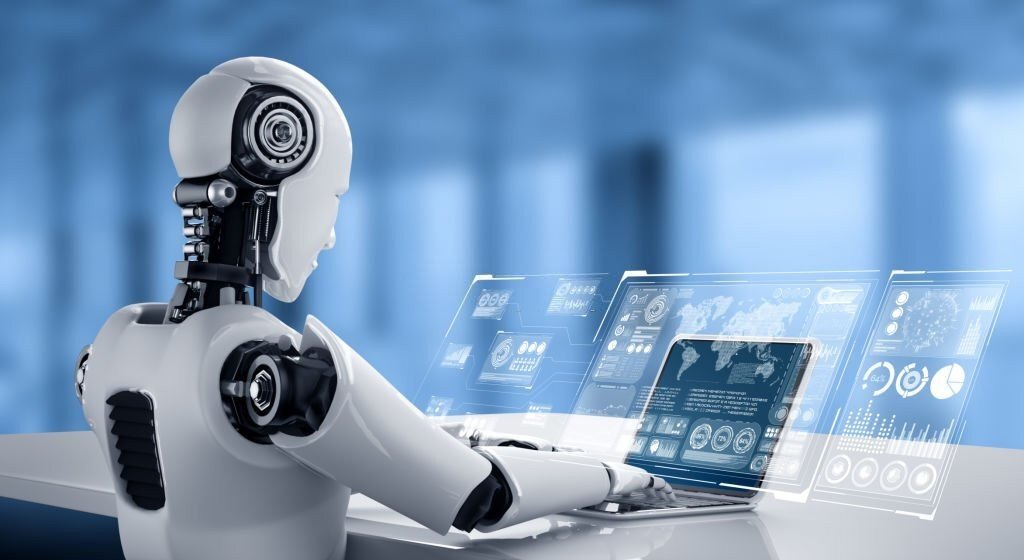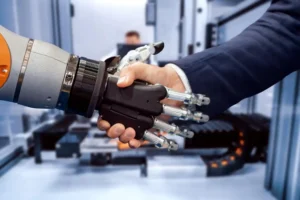Artificial intelligence and robotics have evolved from science fiction concepts into powerful technologies reshaping our world. While robotics focuses on creating machines that can perform physical tasks, AI provides the intelligence these machines need to adapt, learn, and make decisions. The convergence of these two fields is creating unprecedented opportunities across multiple industries.
This fusion represents more than just technological advancement—it’s fundamentally changing how we approach automation, precision tasks, and human-machine collaboration. From surgical robots that can perform delicate operations to manufacturing systems that self-optimize production lines, AI-enhanced robotics is delivering solutions that were unimaginable just a decade ago.
Understanding this technological synergy is crucial for businesses, researchers, and anyone interested in the future of automation. Let’s explore how AI is transforming robotics systems and what this means for various industries.
Current Applications of AI in Robotics
Manufacturing and Industrial Automation
Manufacturing has become the testing ground for some of the most sophisticated AI-powered robotic systems. Modern factories employ robots equipped with computer vision and machine learning algorithms that can identify defects, adapt to product variations, and optimize assembly processes in real-time.
These systems excel at quality control, using AI to analyze thousands of products per minute with accuracy levels that surpass human inspection. Predictive maintenance algorithms help these robots anticipate equipment failures, reducing downtime and maintenance costs significantly.
Healthcare and Medical Robotics
The healthcare sector has embraced AI-enhanced robotics for both patient care and surgical procedures. Surgical robots now use AI to provide real-time guidance during operations, helping surgeons achieve greater precision while minimizing invasive procedures.
Rehabilitation robots powered by AI adapt their therapy programs based on patient progress, personalizing treatment plans and tracking recovery metrics. These systems can provide consistent, patient-specific care that complements human medical expertise.
Service and Hospitality Robots
AI has enabled service robots to understand and respond to human needs more naturally. Hotels deploy robots that can navigate complex environments, recognize guests, and provide personalized assistance. These systems use natural language processing to communicate effectively and machine learning to improve their service quality over time.
Restaurant robots equipped with AI can take orders, navigate crowded spaces, and even adjust their behavior based on customer preferences and dining patterns.
Autonomous Vehicles and Transportation
Perhaps no field demonstrates AI’s impact on robotics more clearly than autonomous vehicles. Self-driving cars represent sophisticated robotic systems that must process vast amounts of sensory data, make split-second decisions, and navigate unpredictable environments.
These vehicles use deep learning algorithms to recognize objects, predict the behavior of other drivers and pedestrians, and plan optimal routes while considering real-time traffic conditions.
Key Benefits of AI-Enhanced Robotics
Unprecedented Efficiency and Productivity
AI transforms robots from programmed machines into adaptive systems that can optimize their own performance. Machine learning algorithms enable robots to identify the most efficient ways to complete tasks, reducing cycle times and energy consumption.
This adaptability means robots can handle variations in their environment or tasks without requiring extensive reprogramming, leading to more flexible and responsive automated systems.
Enhanced Accuracy and Precision
AI-powered robotics systems achieve levels of precision that consistently exceed human capabilities. Computer vision systems can detect microscopic defects, while machine learning algorithms can predict and compensate for environmental factors that might affect accuracy.
This precision is particularly valuable in industries like electronics manufacturing, pharmaceutical production, and aerospace, where even minor errors can have significant consequences.
Improved Safety and Risk Reduction
AI enables robots to better understand and respond to potential safety hazards. Advanced sensor fusion and predictive algorithms help robots avoid collisions, detect unsafe conditions, and shut down operations when necessary.
These safety improvements protect both human workers and expensive equipment, while also enabling robots to work more closely alongside humans in collaborative environments.
Scalability and Consistency
Unlike human workers, AI-powered robots can maintain consistent performance levels regardless of shift changes, fatigue, or other variables. This consistency makes it easier to scale operations and maintain quality standards across multiple locations or production runs.
Current Challenges in AI-Enhanced Robotics
Data Privacy and Security Concerns
AI-powered robots collect and process enormous amounts of data, raising significant privacy and security questions. This data often includes sensitive information about business operations, customer behavior, or even personal activities in the case of service robots.
Protecting this data requires robust cybersecurity measures and clear policies about data collection, storage, and usage. Organizations must balance the benefits of data-driven AI with the need to protect sensitive information.
High Implementation and Maintenance Costs
The initial investment required for AI-enhanced robotic systems can be substantial. Beyond the hardware costs, organizations must invest in specialized software, training, and ongoing maintenance. The complexity of these systems often requires skilled technicians and engineers, adding to operational expenses.
Small and medium-sized businesses may find these costs prohibitive, potentially creating competitive disadvantages compared to larger organizations that can afford advanced automation.
Technical Complexity and Integration Challenges
Integrating AI-powered robots into existing workflows and systems presents significant technical challenges. These systems must work alongside legacy equipment, integrate with existing software platforms, and adapt to established processes.
The complexity of AI algorithms also makes troubleshooting and maintenance more difficult, requiring specialized knowledge that may not be readily available in all organizations.
Workforce Displacement Concerns
The advanced capabilities of AI-enhanced robots raise legitimate concerns about job displacement. As these systems become more capable and cost-effective, they may replace human workers in various roles, from manufacturing to service industries.
Organizations must carefully consider the social and economic implications of robot deployment and may need to invest in retraining programs or other measures to support affected workers.
Emerging Trends and Future Developments
Collaborative Intelligence
The future of AI-enhanced robotics lies not in replacing humans but in creating collaborative systems where robots and humans work together effectively. These systems will leverage AI to understand human intentions, predict needs, and provide assistance that enhances rather than replaces human capabilities.
Edge Computing and Real-Time Processing
Advances in edge computing are enabling robots to process AI algorithms locally, reducing latency and improving response times. This development is particularly important for applications requiring real-time decision-making, such as autonomous vehicles or surgical robots.
Improved Natural Language Processing
Future robotic systems will feature more sophisticated communication capabilities, allowing for more natural interactions with humans. This improvement will be particularly valuable in service applications and collaborative work environments.
Advanced Learning Capabilities
Next-generation AI systems will enable robots to learn from experience more effectively, adapting to new situations and improving their performance over time without extensive reprogramming. These capabilities will make robots more versatile and valuable across a broader range of applications.
The Path Forward for AI-Powered Robotics
The integration of AI and robotics represents one of the most significant technological developments of our time. While challenges remain, the potential benefits across industries continue to drive innovation and investment in this field.
Success in implementing AI-enhanced robotics requires careful planning, realistic expectations, and a commitment to addressing both technical and social challenges. Organizations that approach this technology thoughtfully, with attention to security, workforce concerns, and integration challenges, will be best positioned to realize its transformative potential.
As AI capabilities continue to advance and costs decrease, we can expect to see even broader adoption of these systems across industries. The key to success will be finding the right balance between automation and human expertise, creating systems that enhance rather than simply replace human capabilities.
Frequently Asked Questions
What’s the difference between traditional robotics and AI-enhanced robotics?
Traditional robots follow pre-programmed instructions to perform specific tasks in controlled environments. AI-enhanced robots can adapt to changing conditions, learn from experience, and make decisions based on real-time data analysis.
How long does it typically take to implement AI-powered robotic systems?
Implementation timelines vary significantly based on complexity and scope. Simple applications might be deployed in a few months, while complex industrial systems can take 12-18 months or longer to fully integrate and optimize.
Are AI-powered robots safe to work alongside humans?
Modern AI-enhanced robots include sophisticated safety systems designed for human collaboration. However, proper training, safety protocols, and regular maintenance are essential to ensure safe operation in shared workspaces.
What industries benefit most from AI-enhanced robotics?
Manufacturing, healthcare, logistics, and service industries have seen the greatest benefits so far. However, applications are expanding rapidly into agriculture, construction, retail, and many other sectors.



